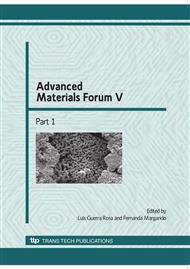p.1172
p.1178
p.1186
p.1194
p.1199
p.1206
p.1215
p.1222
p.1228
An Experimental Characterization of Cork Storage Modulus for Cork-Steel Applications in Vibration Attenuation
Abstract:
This study presents an experimental characterization of cork storage modulus used to model the vibration response of bars built using alternate layers of cork and steel. In the experimental setup, the specimen was suspended from a fixed support by two thin lines while a shaker was suspended from a mobile support by metallic chains. The shaker was connected to the bar specimen through a force transducer imposing a dynamical deformation that propagates through the specimen. An accelerometer in the opposite extremity of the bar measures the corresponding vibration response and the cork storage modulus is then obtained from the first peak of this frequency response. The proposed methodology successfully characterized the storage modulus of the cork material used in the multilaminated periodic bars. The results obtained illustrate a satisfactory correlation between
Info:
Periodical:
Pages:
1199-1205
Citation:
Online since:
January 2010
Authors:
Keywords:
Price:
Сopyright:
© 2010 Trans Tech Publications Ltd. All Rights Reserved
Share:
Citation:


